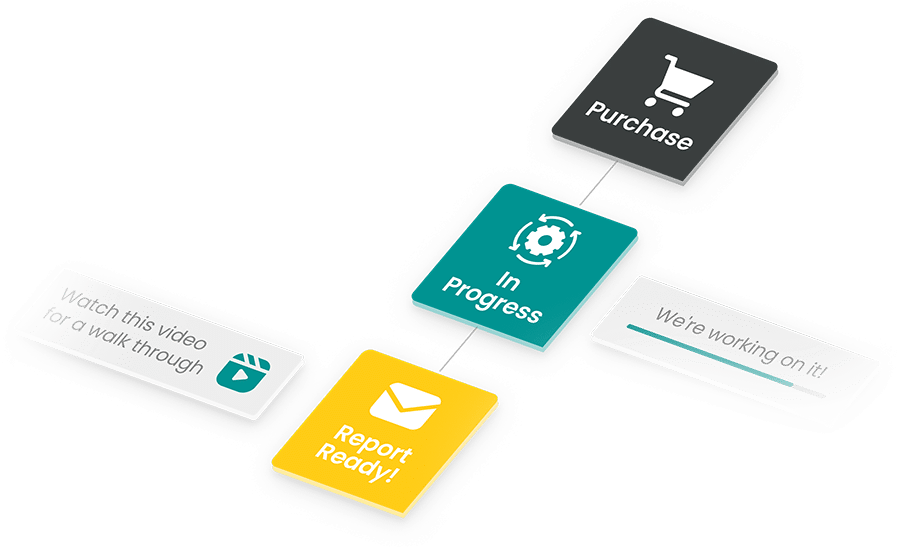Picture a director of curriculum at 9:07 p.m., blue light on a spreadsheet that never ends. Tabs stack. Emails ping. Every vendor promises “measurable impact.” Slides glow with smiling students and tidy charts. Tomorrow’s cabinet meeting looms. The superintendent wants a recommendation. The finance chief wants a reason. Teachers want fewer logins and more minutes that help kids learn.
The room is quiet. The questions are not. Is this tool good for our students, or only good at telling a story? Can we prove outcomes to the board? Will this purchase help the students who need the most support? What happens when someone asks, “Show me the data?”
This is daily life for district leaders. Budgets are tight. Politics swirl. Expectations stay high. No one has time for a research thesis or a six-month study that arrives after decisions are made.
The issue is not choice, but evidence. Data-driven purchasing gives leaders independent signals that are fast, clear, and defensible. Not another dashboard that adds noise. Not a study that misses the window. Practical findings that point to go, adjust, or pass.
The Problem with Gut-Based Decisions
Districts buy based on their gut instinct because time runs out. A vendor promises a reading lift. A couple of teachers swear by a math app. A principal vouches for a tutoring service. The stories feel convincing. The cycle speeds up. Moving forward with partial information starts to seem normal.
Then pilot fatigue arrives. New logins every fall. Coaches juggling multiple implementation guides. Another high priority before the first one had a chance. Skepticism grows. The stack gets crowded. Results stay vague.
Without independent educational program evaluations, good intentions turn into expensive guesses. A tool can impress and still miss your students. What works in one district may flop in another. Schedules, staffing, and dosage matter. When results are unclear, the political heat lands downtown. Why did we buy it? What changed? For whom? If the answer is a glossy deck, the night gets long.
If your evaluation process rewards the best PowerPoint, it is time for an upgrade. Schools are complex. Outcomes vary by grade, campus, and subgroup. To protect budgets and trust, you need evidence that belongs to the district, uses district data, and reflects district students.
What Data-Driven Actually Means, and What It Does Not

Data-driven does not mean a team of statisticians or another analytics layer. It is not code for “delay the decision while we collect everything.”
Data-driven purchasing uses the data you already collect to answer a focused question. Did this product or service help our students? Attendance, grades, benchmarks, progress monitoring, and graduation indicators. The signal exists. You need a fair way to read it.
Rapid-cycle educational impact evaluations fit the job. Think weeks, not semesters. Compare students who used a product or received a service to similar students who did not, while accounting for baseline differences. The outcome is a clear finding that leaders can act on, rather than a 200-page report that gathers dust.
This is not academic theater. It is decision-making work. It respects calendars and teacher time, applies sound methods, and speaks plain language. You do not need a PhD. You need clean data and honest questions.
The Stakes Are Too High for Guesswork
Every purchase has a shadow cost. Pick a weak tool, and something better goes unfunded. That can mean a teacher without release time, a Tier 2 reading block that never gets traction, or a counselor who needs more hours.
You’ve likely seen it before: a district buys a literacy program for grades two through five. Training is rushed. Schedules are tight. Teachers try hard, but time on task is uneven. By spring, there is no clear lift, especially for students below the benchmark. Not because teachers failed. The fit was off, and no one had independent eyes on the data when shifts were still possible.
Now, compare a district that runs an independent check in winter. The analysis reveals gains for English learners when groups are formed based on decoding skill. It also shows that thirty-minute blocks produce measurable growth while fifteen-minute blocks do not. The district adjusts. By spring, gains appear where the schedule held. Renewal becomes a targeted yes. The board conversation cools because the evidence is indisputable.
Every dollar you cannot defend is a dollar that could have gone to students and staff. Vague evidence invites storytelling. Clear evidence directs spending to what works.
The Political and Ethical Imperative

Public education runs on trust. Families expect stewardship. Teachers expect tools that help. Boards expect defensible choices. The press and community pay attention. Transparency is not optional.
Data-driven purchasing gives leaders solid ground. You can show why you chose the method, what you measured, what you found, and the limits of the analysis. You can discuss tradeoffs in public. The stance shifts from hope to evidence. Because they see who benefits most and how we will manage implementation.
This is a culture change. Districts that demand independent evidence raise the bar for vendors and for themselves. The message is simple. We measure impact. We learn out loud. We adjust based on findings. That posture attracts better partners and keeps focus on outcomes, not optics. It also builds community trust because the method and the result are visible.
How Data-Driven Purchases Strengthen Vendor Relationships
Many vendors fear evaluation because it feels like a trap. It does not have to. Independent impact evaluations are collaboration tools when framed as a shared search for truth.
A neutral report shows both sides what works and where to adjust. Patterns surface that internal dashboards miss. Maybe usage jumps when teachers get a one-page guide that fits a 42-minute period. Maybe attendance improves when tutoring sits after lunch instead of after school. Vendors use insights to refine products. Districts use them to refine implementation. Everyone benefits when the tone is practical and the evidence is shared.
MomentMN Snapshot Reports make this feel fair. The district brings its data. The analysis is independent. The report belongs to the district, and it gives the vendor a clear mirror. The conversation shifts from convincing us to co-plan with us. You can point to a chart and agree on schedule, training, and dosage.
Data is not a weapon. It is a mirror. Look together, and the partnership gets stronger.
The MomentMN Approach: Fast, Independent, and Light-Lift

A MomentMN Snapshot Report is an independent educational impact evaluation built for real decision windows. It answers the question that matters: Did this product or service move outcomes for our students? It uses data you already collect, then delivers a short, clear report leaders can take to the cabinet or the board.
Speed matters. Decisions happen in weeks. A Snapshot meets that window with sound methods and a light lift. Privacy stays tight. Language stays plain. Visuals stay clean. You walk into meetings with a result you can explain in three sentences and defend for twenty minutes.
Independence matters. Findings land differently when they come from a neutral party. Superintendents can present a third-party report without suspicion. Funders and community partners grant more credibility.
Flexibility matters. The Snapshot works for EdTech tools, SEL programs, tutoring services, and broader models. It respects context. Rural and urban systems look different. The method accounts for baseline differences and focuses on fair comparisons within your world.
Picture the meeting. A few charts, a clear narrative, the main effect and where it is strongest, a short note on limitations, and practical next steps. No jargon. No spin. Just a defensible result and a plan. Light, plain, useful.
Real-World Scenarios: When Districts Use Evidence to Win
Curriculum renewal. A district weighs renewal of a literacy program in grades three and four. Teachers feel split. Families want stability. The Snapshot shows measurable reading gains for English learners in schools that protected a continuous thirty-minute block, and no effect where blocks were chopped into ten-minute segments. The district renews for targeted campuses, updates scheduling guidance, and funds coaching where the block is hard to protect. The choice feels calm because it is grounded.
EdTech procurement. Two math tools look similar and both offer discounts. The Snapshot looks at outcomes such as standardized math scores. Students below the benchmark show greater gains in math with Tool A, while students at or above the benchmark show no meaningful difference. The district selects Tool A for intervention and keeps current resources for others. Procurement avoids a one-size-fits-all purchase that would have cost more and produced less.
Grant reporting. A nonprofit provides SEL lessons in middle schools. A funder asks for proof. The Snapshot uses attendance, behavior incidents, and a short pre-post measure already in the system. The report shows a reduction in chronic absenteeism for students with at least eight sessions, especially for those with multiple prior referrals. The nonprofit secures funding. The district confirms value.
Superintendent turnover. New leadership arrives with a mandate to stabilize what works. The Snapshot compiles neutral findings across tools and services. The board sees effectiveness by grade, subgroup, and school. Programs with proof continue. Programs without proof get a short runway and a plan to evaluate quickly. The transition centers on students instead of politics.
The Ripple Effect: Culture Shift Toward Evidence
Treat evaluation as a habit, and everything sharpens. Leaders ask better questions. Which subgroup benefits most? What dosage matters? Which schedule protects instructional time? Teachers feel seen when data reflects classroom reality. Vendors align with student outcomes because the rules are clear. Grant partners notice the discipline and often help fund the cycle.
Evidence becomes a shared language, not a checklist. Board conversations shift from defense to learning. The district becomes known for clarity and transparency, which attracts stronger proposals and filters out noise. Call it evidence literacy for administrators. It is not about turning everyone into statisticians. It is about making better, braver decisions with the information you already have.
The Bigger Picture: From Compliance to Confidence

Districts are asked to do more with less. Saying “here is the evidence” is a relief. It changes posture, smooths meetings, and opens space for real conversations about student needs. You stop reacting. You start guiding.
When decisions rest on independent findings, leaders can speak with a calm voice to boards, teachers, parents, and the press. The message is steady. We measured. Here is what worked. Here is what we will adjust. Here is what we will stop. That rhythm builds trust and frees energy for instruction, relationships, and culture.
This is strategic and ethical. Students deserve tools that prove value. Teachers deserve clarity. Families deserve transparency. Communities deserve visible stewardship.
Do Not Guess. Get the Answers You Need.
Every district wants better outcomes. That goal gets harder when purchases lean on instinct or pressure. Clarity is available. Independent, rapid, transparent evidence can live inside your decision windows. It can point to go, adjust, or pass. It supports teachers, strengthens partnerships, and protects budgets.
The MomentMN Snapshot Report delivers that clarity. A focused analysis that uses your data, respects your calendar, and speaks your language. A short, clear report you can share with leaders, staff, and partners.
If you are ready to move from hope to evidence, we would love to talk. Experience what it is like to get a MomentMN Snapshot Report that describes the impact of a product or service on your students.
Data will not solve every problem. It will stop a few bad purchases, light up what works, and give you solid ground to lead with confidence.




